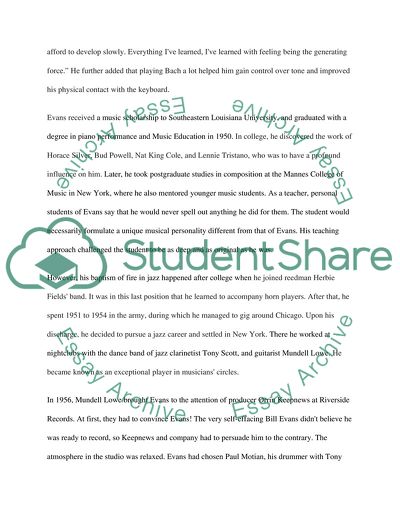Cite this document
(“Bill Evans Essay Example | Topics and Well Written Essays - 1250 words”, n.d.)
Bill Evans Essay Example | Topics and Well Written Essays - 1250 words. Retrieved from https://studentshare.org/miscellaneous/1559526-bill-evans
Bill Evans Essay Example | Topics and Well Written Essays - 1250 words. Retrieved from https://studentshare.org/miscellaneous/1559526-bill-evans
(Bill Evans Essay Example | Topics and Well Written Essays - 1250 Words)
Bill Evans Essay Example | Topics and Well Written Essays - 1250 Words. https://studentshare.org/miscellaneous/1559526-bill-evans.
Bill Evans Essay Example | Topics and Well Written Essays - 1250 Words. https://studentshare.org/miscellaneous/1559526-bill-evans.
“Bill Evans Essay Example | Topics and Well Written Essays - 1250 Words”, n.d. https://studentshare.org/miscellaneous/1559526-bill-evans.


